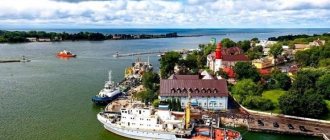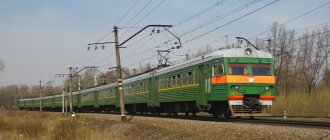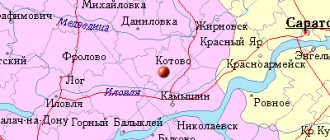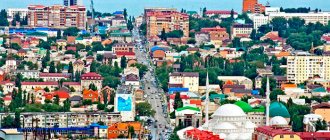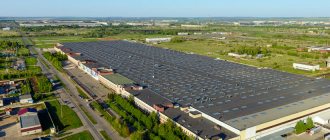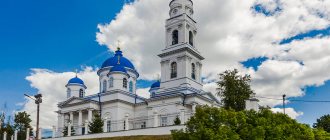City coat of arms
City coat of arms
The coat of arms was developed before 1996 by a commission under the city administration, which was headed by I. Vorontsov (head of the administration from 1993 to 1996) and I. Nabiulin (in 1996-1997), the project was presented to the Council of Deputies in 1997 (IO head of administration I Shchekotikhin). This coat of arms, together with the city flag, was approved by the Council of Deputies and included in the Charter of Zaozersk (1998).
Description of the coat of arms: The blue field of the shield is crossed horizontally by a white wavy line. On the line are two crossed golden anchors. Below them is an image of a seahorse.
Symbolism of the coat of arms: Two crossed golden anchors symbolize the seaside port city. The wavy line dividing the shield symbolizes the sea. The Northern Lights and two crossed anchors are symbols of the North and the port city. The seahorse symbolizes the submarine forces of the Northern Fleet. In general, the coat of arms symbolizes the city-base of submarine forces in the North.
Passport of the municipal formation of ZATO Zaozersk
Cooperation
Local authorities
Information about local government bodies of municipalities of the Murmansk region
Passports of municipalities
Passport of the municipal formation of ZATO Zaozersk
1. Municipal status
- in accordance with the Law of the Murmansk Region dated December 2, 2004 No. 530-01-ZMO, it is given the status of an urban district.
2. Population
as of 01/01/2018 - 9,915 people.
3. Number of voters
as of 01/01/2021 - 6,186 people.
4. Number of settlements on the territory of the municipality
— 1 (closed city of Zaozersk).
5. Official symbols of the municipality
Coat of arms and flag
established by the Charter of the ZATO of Zaozersk (Decision of the Council of Deputies of the ZATO of Zaozersk dated June 11, 2005 No. 81-1396, dated September 21, 2005 No. 82-1411), registered in the Heraldic Council under the President of the Russian Federation No. 1903, 1995.
6. Representative body of local self-government:
- Council of Deputies of the ZATO city of Zaozersk, Murmansk region;
- address: 184310 Murmansk region, Zaozersk, Shkolny lane, 1.
- tel./fax: 8(81556)32601;
- Email;
- elected on September 8, 2019 for a term of 5 years;
- the established number of deputies is 15;
- the elected number of deputies (as of 01/01/2020) is 15, including 1 working on an exempt basis;
- permanent deputy commissions - 5: - on normative legal work; — on financial, economic and business activities; — on social policy and protection of citizens’ rights; — counting; - mandated.
Batch name Faction leader Number of faction members Date of official creation of the faction "United Russia" Tishchenko S.V. 5 25.02.20220 "LDPR" Belov Alexander Yurievich 4 29.10.2019 - head of the representative body - Chairman of the Council of Deputies Igor Viktorovich Vinokur
; works on a permanent basis. office phone 8(81556) 326-00, 326-01. - Deputy Chairman of the Council of Deputies: Maria Yakovlevna Shpuleva
, works on a non-permanent basis. phone: 8(81556) 326-01 - There are a total of 6 employees of the apparatus: - the head of the apparatus - the head of the organizational and legal department, - a leading specialist - 3; - specialist of the 1st category, - chief accountant of the Council of Deputies.
- 7. Head of the municipal formation: Lebedev Sergey Arkadyevich
- acting head of the municipal formation, heads the administration telephone: (81556) 3-15-00, 3-15-01, fax - 3-15-01 - 8. Administration:
office phone 8(81556) pr. 315-01, 315-00. Administration address: 184310 Zaozersk, Murmansk region, Shkolny Lane, 1.
- Email;
- 9. Zaozersk Territorial Election Commission:
address -184310 Zaozersk, Murmansk region, Matros Ryabinin street, 23; tel. 8(81556) 336-73.
- 10. Media
: newspaper "Zapadnaya Litsa", founder - MU "Zaozersk Committee for Television and Radio Broadcasting and Press", founder - administration of the ZATO of Zaozersk address: 184310, Murmansk region, Zaozersk, Sailor Ryabinin St., 23 tel. 8(81556) 315-84,
- 11. Control and Accounting Commission of ZATO Zaozersk:
address -184310 Zaozersk, Murmansk region, Shkolny lane, 1, began to exercise powers - 01/10/2020, term of office - 5 years; tel. 8(81556) 315-83
City `s history
In 1860, the tsarist government allowed the settlement of the northern territories of Russia by Finns, and the first Finnish settlers appeared in the Western Litsa region (from the name of the Zapadnaya Litsa River). In 1931 they formed the Komintern fishing collective farm, which existed until 1940. In 1940, after the end of the Finnish War, the Soviet government decided to evict Finns from the Murmansk region.
The Soviet government and naval department drew attention to the strategically advantageous position of the Motovsky Bay after the end of the Great Patriotic War, the lessons of which showed that in order to strengthen the northern maritime borders it was necessary to create a nuclear submarine fleet base.
On April 30, 1957, survey expedition No. 3 of military unit 54034, stationed in the city of Severomorsk, launched comprehensive topographical, geotechnical and hydrological surveys for the design and construction of a facility on the shore of Zapadnaya Litsa Bay in Motovsky Bay of the Barents Sea.
In 1958, under the leadership of the chief engineer of the project, Nikolai Semenovich Slutsker, the first master plan for the development of the Zaozerny village was developed, approved on 08/28/1958 by the chief architect of the Northern Fleet, engineer-lieutenant-colonel Blumenthal, and construction began. This year is considered the year of foundation of the village of Zaozerny. Its city-forming basis was the First Flotilla of Nuclear Submarines, created in July 1961 by decision of the Soviet Government and which at that time became the first and only one in the Soviet Navy.
By decision of the executive committee of the Murmansk Regional Council of Workers' Deputies dated January 10, 1963 No. 46, the settlement located in the area of the Zapadnaya Litsa River in the Kola District was given the name Zaozerny.
In 1961, the House of Fleet Officers was built, which became the cultural center of the village. By 1970, 38 5-story houses, a school with 980 places, a boiler room, and a swimming pool had been built. In 1971, the Murmansk-Pechenga road with a hard surface was built and from it - a 17 km long road to the village of Zaozerny with a bridge over the Bolshaya Zapadnaya Litsa River.
In January 1972, the village of Zaozerny received the name Severomorsk-7 in open correspondence. In 1975, law enforcement agencies appeared here: police, court.
By decree of the Presidium of the Supreme Council of the RSFSR dated September 14, 1981, the settlement of Zaozerny (Severomorsk-7) was given the status of a city with the name Murmansk-150 of the Murmansk region. In November 1981, the first elections of deputies to the city Council of People's Deputies of Murmansk -150 took place. By the decision of the 2nd session of the 17th convocation on December 12, 1981, the executive committee and permanent commissions of the city Council of People's Deputies were elected.
In 1983, the targeted economy began to be put in order. The streets received names, and the houses received new numbers. The population in 1989 was 23.3 thousand people, and the city's housing stock in the early 90s consisted of 112 houses.
In December 1991, the executive committee of the city Council of People's Deputies was abolished and the Administration of Murmansk-150 was formed, which until 1998 was headed by leaders appointed by the Administration of the Murmansk Region.
In 1993, the city Council of People's Deputies ceased its activities. A newly representative body of local government - the Council of Deputies - was elected on September 21, 1997.
Based on the Order of the Government of the Russian Federation dated January 4, 1994 No. 3-r and the Decree of the Administration of Murmansk -150 dated February 22, 1994 No. 49, the city of Murmansk-150 of the Murmansk Region was renamed into the city of Zaozersk, Murmansk Region.
In accordance with the Law of the Russian Federation dated July 14, 1992 No. 3297-1 “On a closed administrative-territorial entity”, Resolution of the Supreme Council of the Russian Federation dated July 14, 1992 No. 3298-1, the city of Zaozersk in the Murmansk region is a closed administrative-territorial entity (ZATO).
By the decision of the second session of the 21st convocation of the city council of people's deputies of Murmansk-150 dated October 26, 1990, the first mass media outlet in the city was established - the editorial office of the newspaper "Zapadnaya Litsa". Since May 1991, the radio editorial office “Zapadnaya Litsa” has been broadcasting its programs. Since 01/01/1995, the Committee on Television and Radio Broadcasting and Public Relations has been operating in the city (since 01/23/2002 - MU “Zaozersky Committee on Television and Radio Broadcasting and Press”). Since 1996, an indoor city market has been put into operation. On the territory of Zaozersk there are municipal institutions and municipal unitary enterprises: Municipal Unitary Enterprise “Customer Service”, Municipal Unitary Enterprise “Housing and Communal Services”, Municipal Unitary Enterprise “Road Transport Services”, Municipal Unitary Enterprise “City Gas Industry”, etc.; joint stock and business companies.
The city's education system is represented by 3 general education and 1 evening school, an interschool educational center and out-of-school educational institutions: Children's Youth Sports School, Center for Young Tourists, Center for Children and Youth. There is a Children's Music School in the city. In January 2001, three preschool education institutions (kindergartens) were transferred from the jurisdiction of the Ministry of Defense of the Russian Federation to municipal ownership. The city has a Central City Library and two of its branches. Medical care is provided to the population by employees of the Central City Hospital and the Naval Hospital. Residents of the city can receive secondary vocational education at the Zaozersk branch of the Murmansk Cooperative College of Consumer Cooperation, which has been operating in Zaozersk since 1997.
There is a nuclear waste processing plant in Andreeva Bay; patronage relations have been established with the Ministry of Atomic Energy.
During the implementation of organizational and staffing measures to reduce the Armed Forces of the Russian Federation, since 1991, an outflow of population from the city began, the bulk of which are military personnel and members of their families. According to information from the Representative Office of the Department of Summary and Territorial Statistics in the ZATO city of Zaozersk, the number of residents as of 01/01/2005 is 13.1 thousand people.
By decision of the Council of Deputies No. 14 of November 18, 1997, the City Coat of Arms was adopted; by decision No. 103 of 05.05.1998, the City Charter was adopted; By decision No. 105 of May 12, 1998, the flag of the city of Zaozersk was adopted.
Since 1991, the city administration has been headed by managers appointed by the Murmansk Regional Administration. The first Head of the Administration of Zaozersk, elected by the residents of the city on November 15, 1998, was Boris Gennadievich Vorobyov.
03/18/2000, on Submariner Day, the opening and consecration of the Church of St. Nicholas, erected in memory of the fallen submariners, took place.
Decree of the President of the Russian Federation dated June 30, 2000 No. 1208 “On approval of the boundaries of the closed administrative-territorial entity - the city of Zaozersk, Murmansk Region” established the territory and boundaries of the city.
On December 9, 2001, elections of deputies to the Council of Deputies of the ZATO of Zaozersk of the second convocation took place.
In accordance with the directive of the General Staff of the Russian Navy dated July 4, 2002, from September 1, 2002, the Directorate of the 1st Red Banner Flotilla of Nuclear Submarines (NPS) was reorganized into the Directorate of the 11th Red Banner Squadron of Nuclear Submarines of the Northern Fleet. Rear Admiral Alexander Fedorovich Smelkov (now vice admiral) was appointed commander of the 11th squadron.
11/15/2002 Boris Gennadievich Vorobiev was elected Head of the Administration.
By Resolution of the Election Commission of the Murmansk Region dated March 28, 2003 No. 340, the Zaozersk Territorial Election Commission was formed in the ZATO city of Zaozersk, the chairman of which was appointed Andreev Alexander Nikolaevich by Decree of the Election Commission of the Murmansk Region dated March 28, 2003 No. 341.
07/18/2004, in connection with the early termination of the powers of the Head of Administration B.G. Vorobyov, elections of the Head of the municipal formation of ZATO took place
Zaozersk, Ruben Beniaminovich Karakhanov was elected Head of the municipality.
Elections of deputies of the Council of Deputies of the ZATO city of Zaozersk of the third convocation are scheduled for December 11, 2005.
“And not a single person around.” How I wandered through the tundra of Western Murman
Photo: Mikhail Pustovoy
Drank water from a puddle, spit out mosquitoes
A swarm of mosquitoes hover around us.
The gnat stings through clothing, gets into the eyes and interferes with breathing, penetrating into the mouth. Salvation from him awaits on the tops of nameless cliffs hanging over the bay. I think so. After all, quite recently, being on the western side of the fjord, I heard gusts of wind from the Barents Sea buzzing alarmingly in the kingdom of deserted rocks. The way up is difficult: the 20-degree arctic heat is exhausting, dense birch thickets lash your face with dry branches, and the ravines weave into labyrinths. These places are located in the east of Ura Bay, on the shores of the Barents Sea and 70 kilometers, if you drive along the Pechenga road, from Murmansk. If you go day after day to the sea, you will find nothing but abandoned settlements, rare fishermen and poachers. This is Western Murman. Having made our way to the next stone platform, we are drenched in sweat. Oddly enough, this is only the second height of the evening. However, this is not surprising, since the hike started towards the end of the day, on Friday, after a sickening working week in Murmansk. We met with my partner on the route, Olga Litvinenko, a few hours ago in Ura-Guba, a remote village in the Kola region, not yet spoiled by the influx of tourists, like Teriberka, to go to places still unknown to us. Her track record as a high-altitude climber includes reaching 6,400 meters on Lenin Peak in the Pamirs, climbing Elbrus and Kazbek, and suffering from pneumonia on glaciers. Once Olga and I walked a hundred-kilometer route on skis to the Barents Sea.
Photo: Mikhail Pustovoy
The edge of the reached height drops off abruptly in places. I look at the swampy tract below - tomorrow we will move through it. A little further, semicircular hills sparkle with snow. In a wide strip of forest near the bay, a cuckoo calls. The sun merges with the horizon, but does not set; the polar day still reigns on July 3. The light floods the fjord, making you squint your eyes. The only negative of the moment is the lack of a lake at hand. We drink water from puddles and it's not that bad, it just smells like moss. Then suddenly it gets dark and the rain starts pattering on the tent.
We climbed the cliffs, took a break from the city
The Arctic is associated with hills, but this is not entirely true. What is in front of us, the Pomors called pakhty, rocky cliffs. But the Pomeranian dialect has long been dead on the Murmansk coast, and the newcomers have simplified geographic toponymy and call any hill a hill. People also think that tundras are swamps. We are moving through a lowland swamp covered with cotton grass, but this is not tundra. The tundra will be waiting for us when we gain altitude. It will crunch with reindeer moss and lichen under your boots. The Lapland tundra is part of the mountainous terrain, but not the swamps or birch urems inhabited by midges.
Another height. We hide behind a stone slab from the arctic wind and brush off mosquitoes. “The bitches are already gone,” says blond Olga and works magic over the gas burner. It soon turns out that the program for this day is endless halts and eating supplies. Olga, who spent her youth in Olenegorsk and Murmansk, until recently lived in the Russian capital. She worked in banks. Now she has returned from the metropolis - a musty anthill of people and cars, to Murmansk and is learning again to breathe the clean air of the Arctic. Murmansk, which is degrading before our eyes, its garbage under the windows, people noisy at night, who are pathetically called “northerners” here (although they are mostly ordinary city dwellers, and not bearers of northern culture), irritates me more and more. Recently I even sent my resume to the regional newspaper of the tiny Chukotka village of Egvekinot. On a hike I run away from this city.
Cloudiness gives way to sun. Mosquitoes attack us furiously. We explore so many swampy ravines on top of the rock massif that my memory quickly erases them. We go down the couloir-gully (there was also a piece of snowfield nearby - what a delight!), splash through the swamp, overcome the next slope and find ourselves at a new height. On the maps it appears as Kitaigora. We wander through the birch and willow forest to the nameless peninsula separating Ura Bay from Chan Bay and Bear Island. Before us stand two peaks, separated by a bridge-pass. The cliffs are mesmerizing with sheer walls, and large reddish stone fragments make it difficult to climb on steep slopes where they are not completely vertical. As nimble as a sparrow, Olga easily grabs hold of the rocks and climbs to the top. I sweat for half an hour on the slopes and cracks, lick my dry lips and, clinging to the ubiquitous birch trees, break through. The problem is not the steepness of the rock, but the 25-kilogram backpack: it treacherously upsets my balance.
Alone with the fjord and hares
Bear Island, when viewed from the shore, merges with an unnamed cape. Curved like a boomerang, it stretches for a kilometer, bristling with green birches and cracked rocks. There was once a village there; Finnish colonists caught fish. The narrow strait between the mainland and the island is deep, and today it contains salmon cages. In the roadstead behind the island there is a red trawler; the fjord, broken by capes, caresses the eye with blue waters. The open sea is invisibly close, but also far away. The landscape is spoiled by calm - the midges are attacking and attacking us.
We wander hour after hour through the massif; Having counted three peaks, and one tiny lake, I explore it empirically: I swim. On one of the heights there is an Orthodox cross. Olga says that he fits into the landscape, but religion disgusts me, and I don’t photograph him. Apart from dwarf or crooked birches, there are no trees here, and even those are barely alive due to lack of water. Among the animals, hares run about, revealing themselves long before they meet with piles of droppings. The polar sun burns at altitude.
We set up a tent at the edge of the cliff separating us from Chan Bay. The awning will flap from the wind all night, but this is better than a swarm of mosquitoes inside. In the morning the world will change; but we don’t know this yet and fall asleep to the sound of the distant rapids of the Gremikha River.
How we were not allowed into the garrison
“How can you hear? Has the boat arrived? — the radio crackles outside the walls of the tent. Bad thoughts creep into my sleepy head that the Rybnadzor inspectors, bored with idleness, have come looking for poachers. This goes on for about ten minutes. I stick my head out. Military surveyors are scurrying around the ruins of the triangulation sign. “How were you not blown away by the wind?” - they are surprised. Surveyors measure heights on the coast, and they are brought from Murmansk by water. “We were in Port Vladimir. It has been uninhabited for a long time, but it seems that people just recently left - there are photographs hanging on the walls everywhere,” says the guy. The fishing village of Port Vladimir is located on the huge island of Shalim. At the dawn of Brezhnev's rule, all residents, which is two thousand people, were deported from there to establish a garrison, which was later moved. Another place on Murman that was destroyed by the military...
Dense gray clouds descend over the fjord. It's drizzling lightly. We descend along the slippery slopes of the buttermilk into the forest, pass through fern thickets and reach the long-awaited shore of Chan Bay. And we have a difficult road ahead. The shores are strewn with large stones, thinned out by muddy areas, and from the side of the birch thicket, slurping swamps approach the sea. On the other side of the bay is the dead garrison and the Chan-Ruchey ammunition depot. Let's go through it, find ourselves in a gorge in which the Gremikha River is raging, and have lunch there over a fire. But first you need to cross the Chanruchey River. I rush through the forest in search of a ford, but all I see are thundering rapids and deep holes. We decide to cross the river at its confluence with the bay - it’s wide, the current carries it away, but it’s not deep there. But at the entrance to the garrison, the guard immediately turns us around: “You can’t come closer than 50 meters to us!”
Photo: Mikhail Pustovoy
The route is breaking down. The downpour drives us into the tent. Sweating in wet clothes is still a pleasure, but, fortunately, there is a lake nearby, and at least an acceptable view before your eyes. Olga takes out sublimates “Gala-Gala” - they are popular among climbers and cost crazy money. Buckwheat with mushrooms looks like compound feed and the taste is a rare disgusting thing, but any food will fit into me. Meanwhile, the sun comes out and the heat returns: I accompany the satisfied Olga to Ura-Guba, to the Vidyaevo-Murmansk bus. It makes two flights a day, a ticket costs 330 rubles. The driver falls into a stupor at the sight of a voting girl with a backpack; Hikers here are exotic. Olga decided not to skip work on Monday, which is a pity.
Photo: Mikhail Pustovoy
Finns used to live here
I am again in the village of Ura-Guba, on the lip of the same name, and this is a chance to fulfill my dream. I live in the port of Murmansk, and we do not have an embankment, and on the outskirts of the city, where there is access to the Kola Bay, the coastline is littered with garbage. Sewage is poured into the bay, and wastewater from industrial zones also goes there. That’s why I haven’t swam in the waters of the Barents Sea for five years. Swimming on Ur is excellent: the water is slightly cool and not as salty as on the Black Sea. The sand spit is one luxurious beach, small fishing boats dangling on the water - a peaceful view. Even the mosquitoes have died down. The low tide exposes the bottom of the estuary, and it seems that it is easy to cross to the other side of the lip. But that's not true.
Photo: Mikhail Pustovoy
Fortunately, Ura-Guba is not a fashionable place. Tourists go to Teriberka - there are ruins, mountains of garbage and Chinese people preoccupied with the Aurora Borealis. There is peace and tranquility in Ura-Guba: several fishing enterprises around the fjord and five thousand residents with a good standard of living. Garbage, as in Murmansk, is not thrown out of windows. Invasion of non-residents occurs sporadically - when salmon go to spawn at the mouth. The village reminds me of villages in Komi: nice estates, well-kept gardens and people who don’t bother you with conversations about the meaning of life. However, the guys I'm chatting with have no plans to stay in the Arctic. They are cramped and tired of the cold. Nobody remembers the tragic history of the village. There are no descendants of those who first took root on the rocky coast of Western Murman in Ura-Guba. In 1864, Norwegians settled here, and then Finns. Until 1940, Ura-Guba was the center of a Finnish region with a prosperous collective farm "Tarmo". Stalin’s policies destroyed everything: at first the Finns were forbidden to speak their native language, then they began to shoot en masse as “enemies of the people,” and later they were simply cleared out, sent to die out in settlements and camps. After World War II, Ura-Guba, destroyed by German aircraft, was repopulated, actively inviting Arkhangelsk and Vologda peasants to the North, and “Tarmo” was renamed “Energia”. Later there was no life for the surrounding Sami; Under Khrushchev, the autochthons of the Murmansk region were almost everywhere squeezed into the ghetto - in the Lovozero region. Today they try not to remember this in the regional media, and even in Moscow there are editors who cut out references to the Finnish tragedy of the region. Western Murman - orphaned shores.
How to spy on a closed submarine settlement?
Movement along the coastal buttermilks was not pleasing with the speed (1.5 kilometers per hour), and the rough terrain was exhausting. If I turn south, crossing the bridge over the Ura River, I will find myself in the Teshin Yazyk tract - in a world of huge hills and beautiful gorges. But... The prospect of wading through swamps and forests for 24 hours during mosquito season does not seem tempting. There is an option to go south, to the Murmansk - Kirkenes road, hitting the Olenya “mountain” (272 meters). But then you have to cross the Ura River, which blocks the path to the highway, and this is roulette. The Ura is wide and rapids, often rushing through canyons. Leaving my thoughts for the morning, I move to the highest hill near the village; the tops of its cliffs are grinning with stone ribs and white with snowfields. But first I’ll take a look at the secret town of Vidyaevo.
Photo: Mikhail Pustovoy
The ridge separating the village from the garrison resembles a victim of artillery shelling. Dead birch trees stick out from the moss and stones like stumps. Other trees break if you touch them. The atmosphere is alarming. It is aggravated by the proximity of the checkpoint in the valley. Officially, entry into Vidyaevo is by pass, but there are always those who go to the submariners’ village through the hills. In winter, checkpoints are driven around on snowmobiles. Vidyaevo is a hotbed of urban entertainment. The Ministry of Defense does not skimp on its contractors - there is a swimming pool, bowling alley and other things. After serving in the Arctic for 13–15 years, the military leaves our region in expensive jeeps, with huge pensions and certificates for apartments. While the pension of a civilian sailor who sailed 15 times along the difficult Northern Sea Route only allows him to pay rent and buy food.
Between me and the hill there is a willow forest. In its place was a collective farm field; it appeared after a difficult struggle with the swamp. The willow twigs won't let me in. They hit you in the face. And I barely get over the deep ditches, pulling my feet out of the marshy turf. But there is a limit to everything. Having escaped into the open spaces of the hill, I enjoy the views of lakes and cliffs; I pull myself up by the cracks in the stones, try to reach higher, but end up... in another ravine. Silence rings. Still, I reach the plateau, but it’s already three in the morning. Rain clouds are approaching. I am setting up camp near a marvelous lake, strewn with stone debris. I treat myself to jelly and try to pass out. The storm wind flaps the awning near the tent, and I have trouble sleeping.
Photo: Mikhail Pustovoy
The Arctic, endless and tiring
Taking a breath, I make a jerk, pressing my fingers into the sharp edges of the slab. I drive my boots into the wet and unstable mosses on the stone ledge. One mistake and I’ll jump head over heels into a gorge overgrown with half-dead birches and strewn with hut-sized boulders. As luck would have it, rain hits me. This is how my second day of solo hiking goes. Having thoroughly examined the area in the morning, I gave up dancing around the Ura River. I am heading north, closer to the Zapadnaya Litsa River; to the regions where the fighting took place in 1941–1944. The map promises me mountain tundra, a minimum of swampy and forested lowlands. There is no need to worry about fords.
At the top of the hill I catch my breath. The sound of lichen crunching underfoot, clinging to bare rocks, gives me a feeling of euphoria. The horizon can be seen for tens of kilometers around: cliffs rise like bastions, and it is not clear what is in the distance - a huge lake or Motovsky Bay, behind which stand the granite shores of the Rybachy Peninsula? I go down the gentle slope; on its sides there are rocky cliffs and giant stone fragments. The ancient kurumnik is already overgrown with dry moss. The hand reaches for the camera, the lips spit out mosquitoes. Illusion of mountains. Fleeting.
Photo: Mikhail Pustovoy
The swamp overgrown with cotton grass pleases the eye only from afar. It feels like a size six swaying female breast. The legs sink in, and it is not always clear where the real rotten swamp is hidden. And the lack of wind in the tract is finishing off. Repellent doesn't help against midges either - I smear it on my face, ears, neck and palms every half hour. Mosquitoes don't care. But, as the Finnish saying goes, “it must be done!” I break through the stone hills to the saving breeze, turning up the volume of the Lithuanian song Ugniavijas in my headphones: “Oh! - Rowan, rowan, where in the swamps did you grow? Hey, hey, ah-ah-ah! Where in the swamps did you grow, among the green moss? Oh, my mother, why did you give me life?
Garrisons who died
On this hike, I promised myself to do without a fire and cook with dry fuel.
But to hell with everything! The acrid smoke knocks the snot out of me and drives away the vileness. I stop on the shore of the lake, get some water and make tea and then coffee with boiling water. I set the buckwheat to cook in a pot. Nearby there is a remote dirt road Ura-Guba - Zaozersk, it leads to the closed city of submariners. I'll cut through it. 10 kilometers ahead is a wooded area, and there is nothing for me to catch there, unless, of course, I have a desire to shoot an elk.
Photo: Mikhail Pustovoy
I’m walking under my backpack and dreaming about a bicycle. A primer covered with gravel and not loaded with traffic is ideal for this type of transport. These are not the nightmare roads with puddles higher than your knees on the Sredny and Rybachy peninsulas, which attract tourists in off-road vehicles like honey to flies. In a couple of hours I saw only one car. I walk and enjoy the blue of the opening Lake Bolshoye Uragubskoye.
Around the bend, ruins appear - left and right. I can't stand ruins. But it is the journalist’s duty to visit them. I wish I hadn't done this. What I see gives me a flash of uncontrollable anxiety. On the left, near Lake Peschanoe, there is an arsenal for storing missile and nuclear weapons for submariners. There's only dirt there. The military left a long time ago and everything that remained was destroyed. “DMB-97” - written on the wall of one of the ruins. A schematic drawing of a naked woman and a penis is present. On the right are the houses of the garrison, founded in 1967. Roofs and stairs collapsed in houses. The grass and trees consume everything. The monument to those who died in the war in the Murmansk direction in 1944 is not in the best condition. Seven people are buried here: Lieutenant K. Ergin, Sergeant T. Staver, Corporal Yu. Kudryavtsev and four nameless soldiers. The silence makes my ears ring.
How I learned the tundra
I go deeper into the forest. The line separating me from occasional meetings with people has been passed. Ahead is the wilderness, tens of kilometers in any direction. Trees gnawed by elk. Snow and ice underfoot. Air defense positions abandoned eight decades ago. And the old, front-line track, more like a path than a highway. “Having fallen in love with the death of frost, you will be able to comprehend all this,” the incantations of the Murmansk metal band “Mor” flash through my head. I often freeze in place, enchanted by the landscapes of Lapland: the twisted branches of birch trees play with cobwebs against the backdrop of the snow-covered hills that never part with the snow in July, and the quaint mirrors of the lakes thoughtfully merge with the dense forests. Bright green grass rushes towards the sun, adjacent to last year's yellowness. Layered into one whole - the echoes of winter and the approaches of summer. And no ravines. Go and go.
At an altitude of 200 meters I find myself in the middle of the tundra. Only individual bushes dare to survive in this world. The lone pine is a miracle. Even the mosquito had almost disappeared. I touch the snow with my hands and laugh joyfully in the deathly silence of the Arctic. I'm coming. I catch the roar of the stream and turn to where the track of the “shift”, which has crushed moss, leads. My intuition tells me that there is a shelter house hidden in the depths of the tundra. I circle for hours through the moss fields, looking at the cones of huge hills. It's a pity that they don't have names to include in the text. So that's how it should be. I step out onto a split pink boulder, look into its door-sized crack and realize that it was he who attracted me, and not the hut, which I never found. The feelings that ignited in me are difficult to describe in words. Just like those goosebumps from the sight of a damp Soviet bunker; here was the second line of defense, and death was eating people everywhere. I turn around and, kilometer after kilometer, walk around the lake with thin capes (mark on the map - 226 meters), flooded with the contrasts of the night sun. Bird cries deafen me.
Photo: Mikhail Pustovoy
The culmination of the campaign has passed. Exhaustion sets in, my legs are cramping from pain, my vision is blurry from insomnia - the walking day has dragged on for 41.2 kilometers. Barely thinking, I scour the marshy shores of Lake Valseyavr. Swollen soil, stones and grass wet like a sponge. I come across several parking lots - they were left by the owners of SUVs who made their way along the road. Broken bottles, excrement and chopped birch trees for the sake of courage. In one of the parking lots there are chairs, a table made from an ammunition box and... a real garbage dump. Holidays in Russian. Rage overcomes me. I break the “furniture” and cover the pit of broken bottles with it. This was left behind by people who came to the Arctic for benefits, temporary workers. It’s so good that they bought Alaska!
Towards the taiga
After the rain came the gentle polar sun. July 7, 2022 I am sitting on the shore of the lake and chewing the remains of the spread (food). As is customary in Lapland, the body of water, which stretches for three kilometers, has no name. I got here around 10 am. The sight of the crooked birch trees was already making me sick, and my eyes longed for the taiga. I barely pitched the tent, cooled my body in ice water, ate from the fire and passed out. In the evening I continued walking. There were 6-7 kilometers left to the Pechenga highway. It was fun to walk: in the distance there was a plateau with monumental cliffs, black lakes and, it seems, we came across traces of a bear. Lost World - I call these inaccessible landscapes. And I go out onto the highway.
Photo: Mikhail Pustovoy
It took me a while to see Murmansk. It took another day to cover 60 kilometers. I shy away from voting for passenger cars. I catch trucks. But hitchhiking didn't go well. The roadside for a hike is not that. And the atmosphere of the empty highway, the crazy colors of the sky and the gloomy spells of Danheim lead me to the “Murmansk Gelendzhik”. To Lake Kilpyavr. To its sandy shores. Another 15 kilometers. The triumph of the Arctic latitudes is absorbing: the smells of fleeting summer make my head spin, and the taiga that has replaced the tundra forest makes me tremble and gives strength to my burning legs. I did it anyway.
Links
- Topographic map 1:200,000
Administrative entities of the region
- Kovdorsky district
- Kola district
- Lovozersky district
- Pechenga district
- Tersky district
| Cities of the Murmansk region |
| Apatity | ZATO Vidyaevo | Gadzhievo | Zaozersk |Kandalaksha|Kirovsk|Kovdor| Kola|Monchegorsk|Murmansk|Olenegorsk|Ostrovnoy|Polyarnye Zori|Polyarny|Severomorsk|Snezhnogorsk |
| Educational institutions of the Murmansk region |
